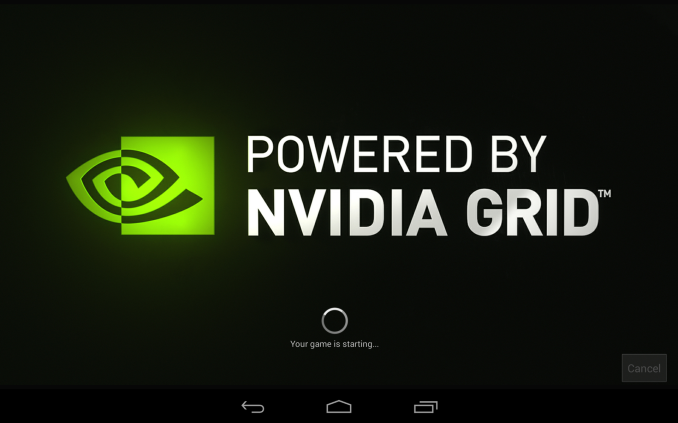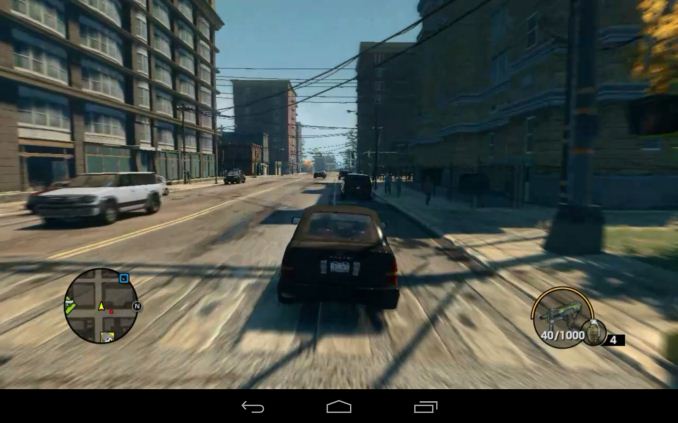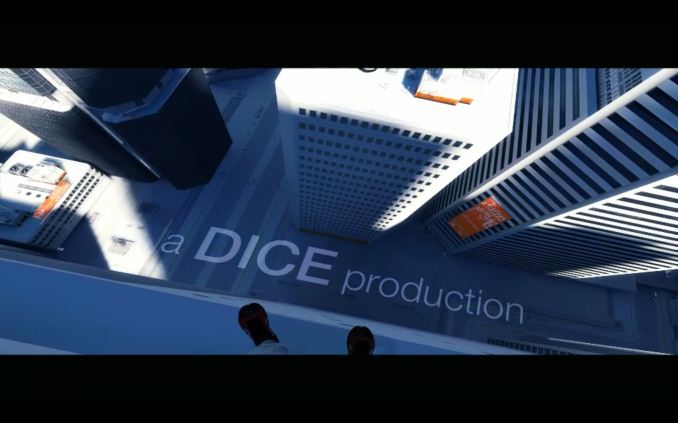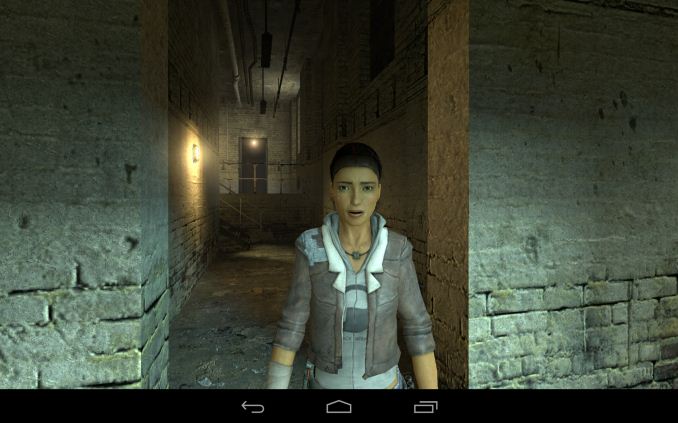The NVIDIA SHIELD Tablet Review
by Joshua Ho on July 29, 2014 9:00 AM ESTGameStream and GRID
The final software features that Shield Tablet brings to the table are GameStream and GRID. These are effectively methods of turning the tablet into a thin client, as all of the rendering/computation is done on a computer either in the LAN or on a server in San Jose. From a technical perspective, both work great as long as the connection has high bandwidth and low latency. For GRID, I managed to get a great user experience on a symmetrical 10 Mbps connection and around 10ms latency to the server. Games like Saints Row 3 played as if running on a console when the device is actually streaming from NVIDIA servers. From the user’s perspective, it’s a matter of going into the app drawer, opening GRID, and selecting a game. It’s simple and given sufficient server coverage I could easily see a Netflix-style usage model taking off quite successfully.
Although I didn’t spend as much time with GameStream, I didn’t detect any input lag and for the most part it’s just as simple. As long as a GameStream-enabled PC is on the same network, accessing GameStream compatible games is just a matter of going to the Shield Hub application, entering a four digit code on the PC to pair it with the tablet, and selecting a game. GameStream also works remotely, but the same caveats that come with GRID apply to GameStream on both the server and client end. Of course, the games that will run on GameStream have to be carefully selected. While it’s fully possible to play a twitch shooter like Call of Duty through GameStream, trying to use a controller in multiplayer is simply a massive disadvantage against people that are competent with a mouse and keyboard. I've included a screenshot of Mirror's Edge that I took while testing GameStream.
Gaming Ecosystem
Ultimately, I’m a bit conflicted on whether GameStream and GRID are really designed to stand on their own though. GameStream only works while you’re at home, and GRID is highly dependent upon low latency and also needs around 10 Mbps download and 5 Mbps upload for an ideal experience. Due to the latency requirement and the fact that the only GRID server bank is in San Jose, the very low latencies that GRID is best suited for are generally only achievable in California and parts of other nearby states. They’re definitely great in the situations that they work, but ultimately the native game library has to stand alone. To this end, the tablet is in a far better situation than the original Shield. The number of games that provide a quality gaming experience is now leaps and bounds better than what we saw with the launch of the Shield Portable. Trine 2 is included out of the box, and while I didn’t get a chance to try co-op mode it’s a compelling experience that once needed GameStream or GRID to be played on Shield. Along the same lines, the Grand Theft Auto series, Half Life 2, and Portal all play surprisingly well.
Fundamentally though, I don’t think single player games alone will sell Shield as a gaming platform. A single player game can only have a certain amount of replay value. Something like Half Life 2 might have 12 hours of gameplay at best. In comparison, multiplayer has massive amounts of replay value because even the same map can play out differently depending upon the people that play in the round. It’s that factor that makes it possible for people to spend 1200 hours playing a game like Battlefield 2. Unfortunately, for the most part the Shield tablet has a game library that seems to be skewed towards single player games. Fortunately, NVIDIA seems to understand this. While I haven’t been able to play War Thunder on Shield tablet, the promise of compelling multiplayer games on this device would be a strong enough reason to excuse potential shortcomings in other areas. Although it's good that an immersive multiplayer title is coming to Shield tablet, the key point of emphasis is that people playing a Shield device can play with those on console or PC as well. Until NVIDIA hits critical mass for Shield device adoption, multiplayer titles that only allow people on Shield to play with others on Shield will struggle because people won't play multiplayer unless there are other people to play with.















174 Comments
View All Comments
Knowname - Wednesday, July 30, 2014 - link
you make a good point, and one I actually considered when I looked for a new toy half a month ago. The Nexus7 (2013) would be just fine for my needs. THAN I saw this out of the corner of my eye and yes, I'll admit I WAS wooed somewhat by the false fantasy that is the 'latest and greatest'. The Nexus 7 is just fine and half the price! In the end though I succumbed to consumerism and though I like to think I'm very frugal I think I made a good deal.Bottom line, it's more than just a little snappier, it's THREE TIMES as snappy! The speakers are an upgrade, the connectivity is an upgrade, SD card compatible and best of all a great selfie camera!! xD ok I kid. Anyway forget the gamestreaming stuff (though... a definite plus if you leave your computer on 24x7) it's still very future proof I won't need to upgrade my tablet for at least a couple years with this!
Unfortunately I bought a GT630 along with this hoping it'd do the trick for gamestreaming but... I don't think it will by what I hear... why just the energy hog GTX cards?? Like I'm gonna leave a GTX based computer on 24x7 just so I can use it more on a remote basis? *ahem* not likely... hopefully they come out with some extremely low power GTX cards in the future.
fivefeet8 - Thursday, July 31, 2014 - link
Gamestream works with the recent Maxwell GTX 750 Ti. Probably one of the best if not the best performance per watt card out now. Plus most video cards use much lower power during idle.Knowname - Thursday, July 31, 2014 - link
but when your playing it it won't be idle. The GTX750ti may be my best bet, once I can get one for like 80 bucks I'll jump on it!phoenix_rizzen - Tuesday, July 29, 2014 - link
Small correction: First line of second paragraph:"NVIDIA is becoming the first tablet to launch a serious gaming tablet"
Guessing that "first tablet to launch" should be "first OEM to launch" or maybe "first hardware manufacturer to launch".
phoenix_rizzen - Tuesday, July 29, 2014 - link
Page 2, Console Mode paragraph:"Finally, there’s the aspect of GameStream and GRID, which make it possible for games to be played on the tablet that would otherwise wouldn’t work due to the compute requirements."
There's one to many "would" in that line. Guessing it's supposed to be "that wouldn't otherwise work".
Death666Angel - Tuesday, July 29, 2014 - link
Second paragraph:"today NVIDIA is becoming the first tablet to launch a serious gaming tablet running Android. "
Probably supposed to mean "first manufacturer" or something along those lines. :D
JoshHo - Tuesday, July 29, 2014 - link
Well, that's embarrassing. Typo corrected.SleepyItes - Tuesday, July 29, 2014 - link
Tegra K1 should support OpenGL ES 3.0, right? So, I wonder if it would be able to run the Dolphin (GameCube and Wii) emulator? The regular shield is awesome for running everything from NES to PSP (and even some NDS games), but being able to play GC/Wii games would be amazing. At the very least it would be cool if it could run NDS (e.g. DraStic) a little faster.lmcd - Tuesday, July 29, 2014 - link
ES 3 is a subset of OpenGL 4. There's no "wondering" about it.As long as the CPU translation is efficient on ARM, it should be feasible.
Read before you post.
fivefeet8 - Tuesday, July 29, 2014 - link
It supports OpenGL ES 3.1 and above. Portal and HL2 are running in Full OpenGL 4x mode on it. I doubt Dolphin couldn't run the same as it already did with the TK1 Dev board.